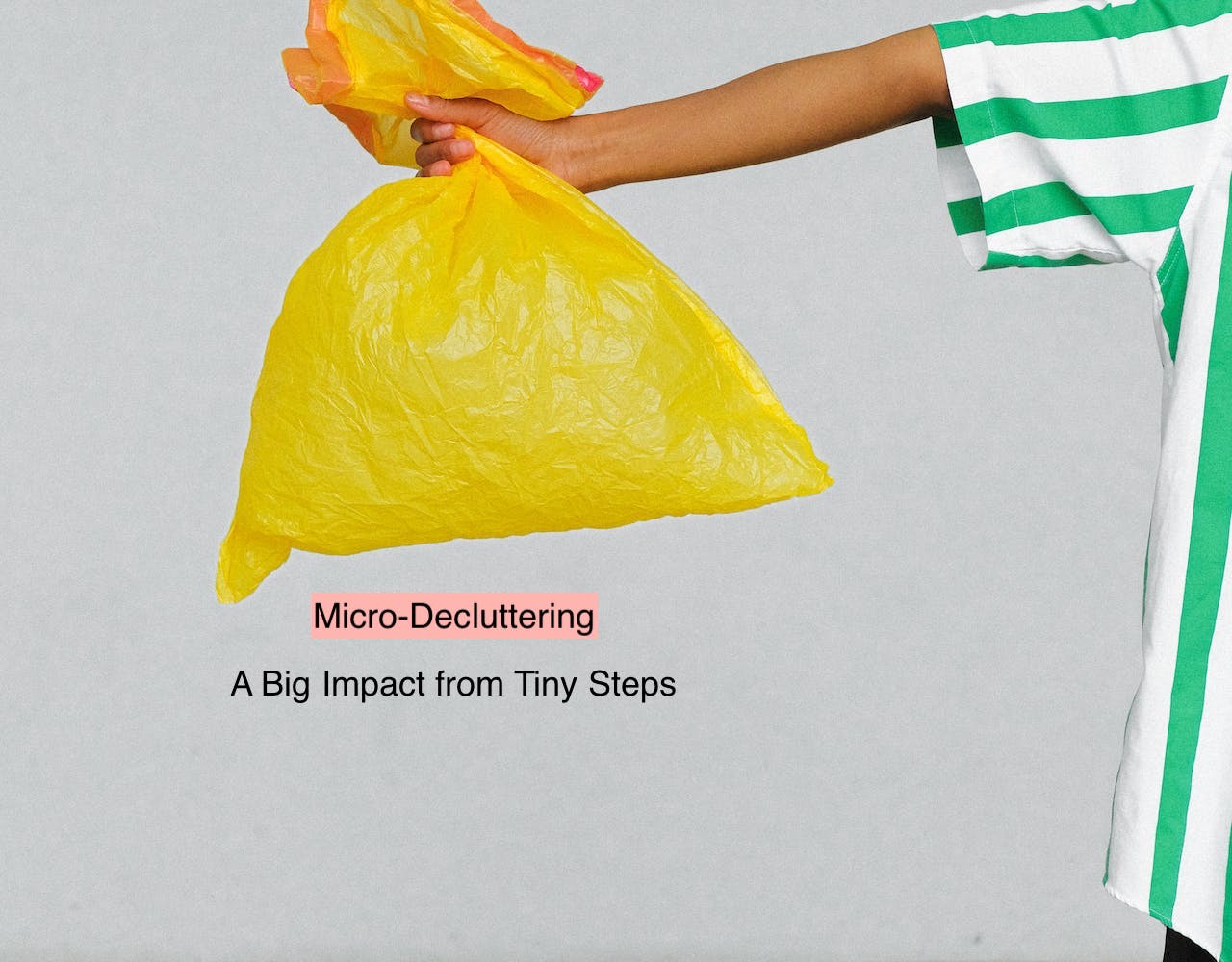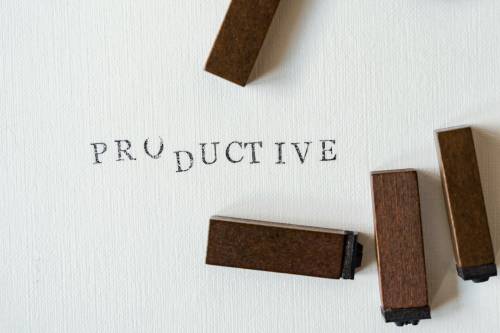

Decluttering your home or workplace can seem overwhelming when you have accumulated a lot of stuff over the years. But, suppose you could make a big difference with just a few small steps? This isn’t some pipedream. It’s actually the principle behind micro-decluttering.
For those who are unfamiliar, micro-decluttering consists of taking small, manageable steps to declutter your space. Rather than tackling everything at once, it’s about focusing on one thing at a time. By doing this, you can feel more confident about completing the process and see results more quickly, motivating you to complete it.
The Benefits of Micro-Decluttering
The power of micro-decluttering lies in its many benefits. Among them are:
- The process is less overwhelming. It’s much less overwhelming if you break the decluttering process down into small steps. You are less likely to become discouraged and give up because you aren’t trying to accomplish everything at once.
- It’s faster. By concentrating on a small area at a time, you can clean and organize more quickly. If you are short on time, this is especially helpful.
- It’s more sustainable. It is easy to incorporate micro-decluttering into your daily routine. Once you learn how to declutter, you’ll do it on autopilot without even noticing.
- Reduces stress and anxiety. When you declutter, you are more likely to feel calmer and more relaxed.
- Improves your productivity. You’re more likely to be productive and focused when your life is decluttered.
- Boosts your mood. Something is uplifting and inviting about a clutter-free space.
- Encourages a more mindful life. When you declutter, you can become more aware of your possessions and appreciate them more.
- Helps you develop decluttering habits. The more you declutter regularly, even if it’s just a few minutes a day, the more likely you are to stick with it.
- Makes a big difference in your space. Decluttering your home or workspace can have a big impact on how it looks and feels. After you eliminate some of the clutter, your space will feel much more open and organized.
How to Get Started with Micro Decluttering
If you’re ready to start micro-decluttering? Here are a few tips to get you on your way.
Before you begin, make a plan.
Those interested in integrating micro-decluttering into their routine should determine a rough plan before diving in headfirst. For example;
- Prioritizing which spaces are essential to declutter,
- What will be the frequency of your micro-decluttering? It can be daily, weekly, or when changing up your seasonal wardrobe.
- After decluttering, decide what you’re going to do with your items. They can be sold, donated, recycled, or thrown away. With February being Declutter for a Cause Month, this is the perfect time to start.
By having a plan in place, you can keep a frequent decluttering schedule. That’s key since it can be easy to lose momentum without figuring out logistics in advance.
Take it slow.
Don’t try to do too much at once if you want to avoid getting overwhelmed. Instead, focus on a small section of the room, a drawer, a shelf, or a pile of papers.
Some specific examples include;
- Get rid of the clutter on your nightstand. Old magazines, empty water bottles, and phone chargers should be chucked.
- Clean out your purse or backpack. Remove everything from your purse, bag, or backpack, and return only the essentials. This strategy can quickly dispose of clutter such as receipts, pens, and other items.
- Organize your kitchen counters. Dishes and appliances you are not using should be removed from your kitchen counters.
- Go through your clothes. If you haven’t worn an item of clothing in a year, or it doesn’t fit, get rid of it.
- Keep your workstation clean and organized. Crowded spaces can be distracting and make you feel overwhelmed when completing your tasks. So, if you have stacks of papers on your desk that you don’t need anymore, throw them out. Organizing important documents can also be arranged by storing them in folders, binders, or expandable file folder wallets.
Set a time limit for decluttering.
Look at your schedule and decide how much time you can dedicate to decluttering daily or weekly. Just make sure that you’re realistic. After all, you don’t want to overcommit yourself.
Some folks might only have a few hours over the weekend to spare. Others may spend 30 minutes daily doing it, broken down into 10-minute intervals.
Don’t be discouraged if you can only declutter for five minutes each day. The progress you made was still pretty noteworthy.
What if you thrive on a schedule? No problem. Just block out a dedicated decluttering time throughout the week into your calendar. On top of that, your phone can remind you when it’s time to tackle the next task.
Be ruthless.
If you no longer need or use something, don’t hesitate to get rid of it. Try to decide whether you need or use something based on how much you’ve used it in the previous year. Unless it’s been that frequent, it’s probably time to part ways.
If letting go of your stuff seems impossible, what can you do? You might want to mark your things for their new destination with colorful labels. Begin with one room and use green stickers for things you like to keep and red for things you don’t.
If you need help boxing up the red-stickered items, you can ask a family member or friend. You might even want to use different colored labels to indicate what you toss, sell, recycle, or donate.
Making the hard decisions first will speed up the rest of the project, even if it feels like you aren’t making any immediate progress.
Implement habit stacks on your existing routine.
Eileen Roth, professional organizer, says that micro-decluttering takes only a few minutes out of your day and can be easily incorporated into your daily routine.
“It’s a good technique that’s easy to implement when you know you have too much of something and spot the signs it’s time to declutter your home,” she explains. For instance, if you have trouble opening your bathroom drawer for excess products, you need to be organized.
In contrast to some organizers who recommend micro-decluttering while doing something else (cleaning out your kitchen drawer while cooking, for instance), Eileen suggests doing it right afterward.
“I don’t particularly recommend doing it while doing something else. i.e., ” Don’t brush your teeth and clean out your excess toothbrushes, toothpaste, or dental floss,” Roth adds. “Concentrate on what you are doing and micro-declutter right after it.”
“So if you look at your makeup drawer and see colors you haven’t worn in ages because either they are old or you dislike them, like eyes, blush, etc.”
Put your junk in a box — and then hide it.
Gather items from your junk drawer, bins, and other areas around your home or office. These are usually items you hardly ever use, don’t know how to use, or can’t identify, such as cords and cables. Take all of them and place them in a box for 30 days.
So long as you don’t miss anything, you can eliminate the items in the box. When you realize you can barely recall what’s in the box after 30 days, it will ease the stress of letting go. Also, schedule time to donate or post to a Buy Nothing group rather than leaving this box in your trunk.
Focus on 15 minutes at a time.
Shira Gill, an organizational expert and author, recommends her signature “15-minute win” strategy. In other words, you just have to spend about 15 minutes in a tiny area of your house or workspace.
“People have cleaned out entire refrigerators, tackled a dreaded work task, washed their cars, and tidied that dreaded area under the kitchen sink,” Gill writes. The reason? You will feel less overwhelmed and more motivated to take action when you set 15-minute victories.
To partake in a 15-minute challenge, Gill recommends:
- Pick a task. Identify one task, big or small, that has been looming over you. It doesn’t matter whether it’s taxes, returns, or dishes.
- Start a timer. Using a timer, watch, or even your phone, you can complete a 15-minute expedition. Even those with very busy schedules can make significant progress during this time.
- Befriend the resistance. Resistance is guaranteed to appear. Be aware of it, accept it, and don’t let it stop you from moving forward. By pushing it away, you are only fueling its fire.
- Make it a game. Embrace dread as a challenge. What can you accomplish in 15 minutes? Is it possible to make it fun? Do you think you can beat your own record? This mini-game aims to surprise you with your own abilities.
Here’s what to keep in mind: This isn’t simply about checking a box. It’s about building momentum and proving that you can succeed at decluttering.
Clean up your digital clutter.
While your digital desktop might not clutter your home or office, it’s doing a number on your mind. Basically, you can get rid of some mental clutter by cleaning up your digital clutter, like;
- Clean up your inbox. You should unsubscribe from any emails you are not interested in reading and delete any emails you are not using.
- Organize your social media accounts. Don’t follow any accounts that don’t add value to your life or that you don’t enjoy following.
- Declutter your phone. Clear out your photos and videos, and delete any apps you don’t use.
- Get rid of the clutter on your calendar. Don’t forget to declutter your calendar to reduce brain clutter. For instance, you can delete outdated tasks and remove no longer relevant recurring events.
Consider the practice of digital minimalism for an even greater level of minimalism.
Put everything back in its place.
After clearing out your chosen area, put everything back where it belongs. The culinary world refers to this preparation procedure as mise en place. This French term means “everything in its place.” And that’s precisely what you want going forward.
Even though mise en place may seem simple, it’s an integral part of any successful kitchen and a required skill of any talented chef. It will help you stay organized and prevent clutter from returning.
FAQs
What is micro-decluttering?
By micro-decluttering, you declutter your space in bite-sized chunks. A drawer, shelf, or corner can be decluttered instead of tackling your entire office or house at once.
How do I get started with micro-decluttering?
Starting a micro-decluttering project can be easy if you follow these tips:
- Set a timer for 10-15 minutes. As a result, you can stay focused and avoid becoming overwhelmed.
- Choose a small area to declutter. You should start by clearing out a cluttered drawer, shelf, or corner.
- Sort through your belongings. Make a list of the items you use, love, and need. Don’t keep it if it’s not needed.
- Put away the things you’re keeping. After decluttering the area, arrange the items you’re keeping in a way that makes sense to you.
How often should I do micro-decluttering?
Micro-decluttering can be done as often as you like. Some people do this every day, and others do it once a week or once a month.
What are some tips for staying motivated with micro-decluttering?
You can stay motivated with micro-decluttering by following these tips:
- Focus on small goals, and be sure to celebrate your successes
- Stay on track with the help of a decluttering buddy.
- Find inspiration by listening to decluttering podcasts or watching decluttering videos.
- Whenever you complete a decluttering project, reward yourself.
What are some creative ways to micro-declutter?
The following are some creative micro-decluttering ideas:
- Do a “10-item challenge.” In 10 minutes, declutter ten items.
- While you wait, declutter. When you stay for something, such as coffee to brew or laundry to finish, declutter a small area.
- Declutter one item a day. Each day, choose one item to declutter.
- Use a decluttering app. There are a variety of apps for decluttering to keep you motivated, such as Tody, Sortly, Toss, and Centriq.
Image Credit: Anna Shevets; Pexels











Deanna Ritchie
Editor-in-Chief at Calendar. Former Editor-in-Chief, ReadWrite, Editor-in-Chief and writer at Startup Grind. Freelance editor at Entrepreneur.com. Deanna loves to help build startups, and guide them to discover the business value of their online content and social media marketing.